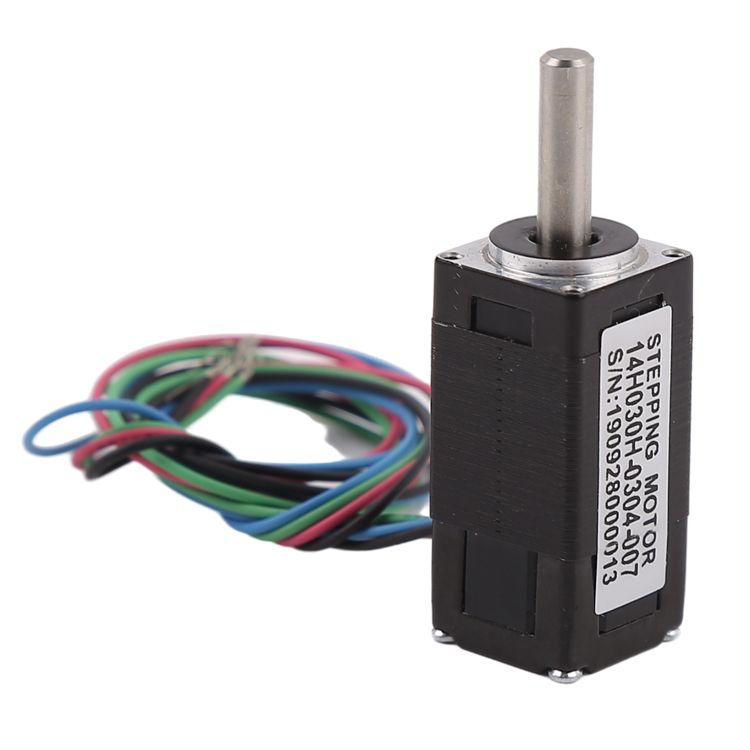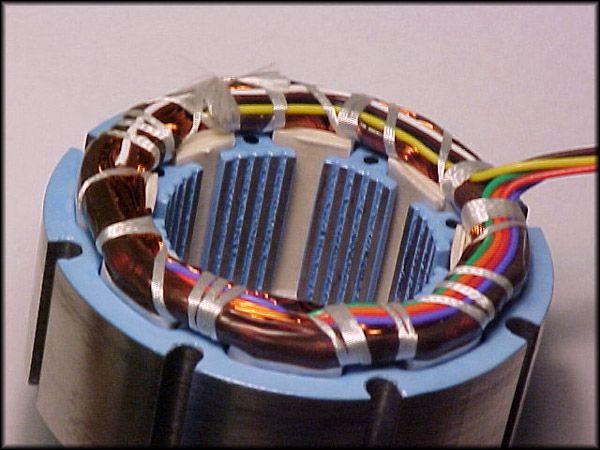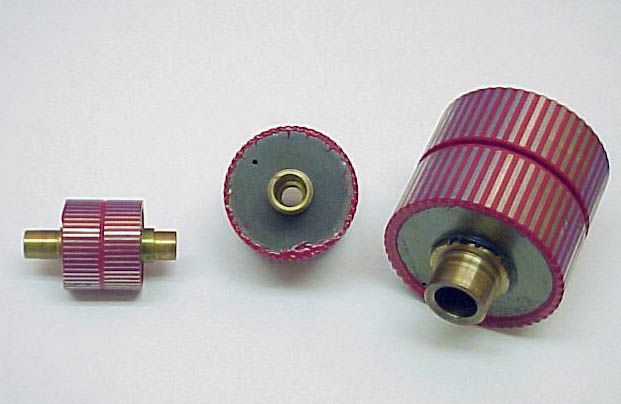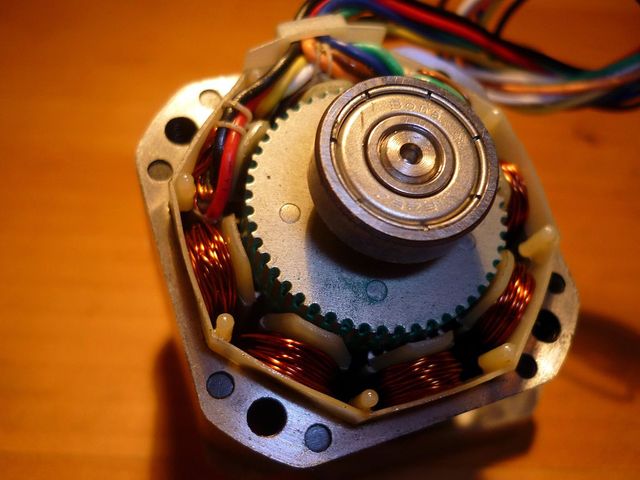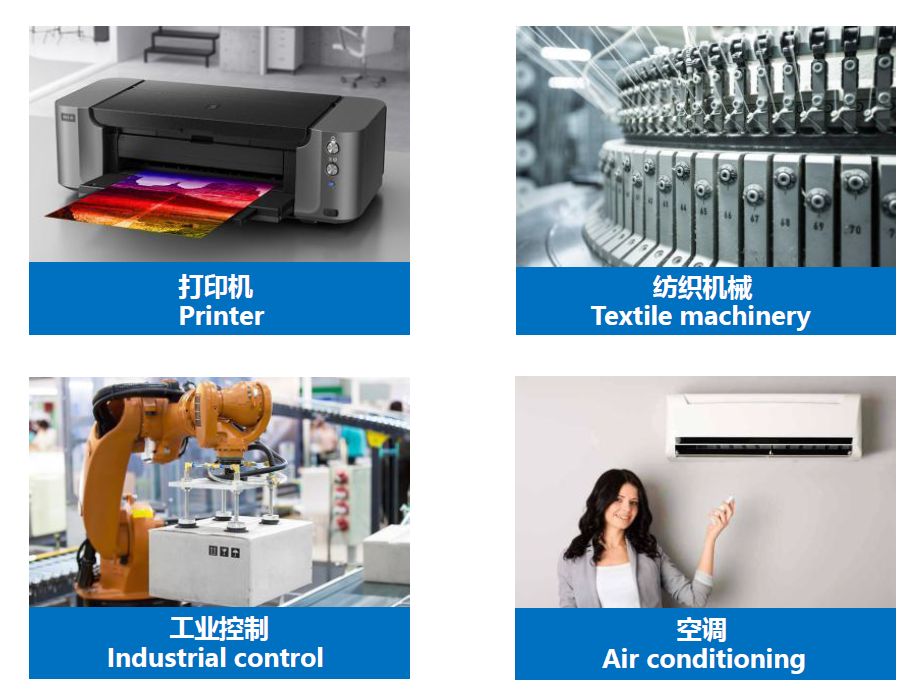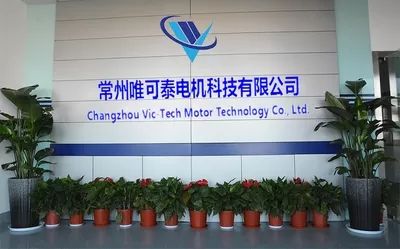Silniki krokowenależą do najbardziej wymagających silników dostępnych obecnie na rynku, ze względu na wysoką precyzję kroków, wysoką rozdzielczość i płynny ruch, silniki krokowe wymagają zazwyczaj dostosowania, aby osiągnąć optymalną wydajność w określonych warunkachaplikacjeDo najczęściej dostosowywanych cech konstrukcyjnych należą wzory uzwojeń stojana, konfiguracje wałów, niestandardowe obudowy i specjalistyczne łożyska, co sprawia, że projektowanie i produkcja silników krokowych jest niezwykle trudna. Silniki można zaprojektować tak, aby pasowały do danego zastosowania, zamiast narzucać je użytkownikowi, a elastyczne konstrukcje silników zajmują minimalną ilość miejsca. Mikrosilniki krokowe są trudne w projektowaniu i produkcji i często nie mogą konkurować z większymi silnikami.Mikrosilniki krokoweOferują unikalne podejście projektowe, a wraz z pojawieniem się technologii hybrydowych silników krokowych, mikrosilniki zaczynają być stosowane w urządzeniach medycznych i automatyce laboratoryjnej, zwłaszcza w zastosowaniach wymagających wysokiej precyzji, takich jak mikropompy, dozowanie i sterowanie płynami, zawory zaciskowe i sterowanie czujnikami optycznymi. Mikrosilniki krokowe można nawet montować w elektrycznych narzędziach ręcznych, takich jak pipety elektroniczne, gdzie wcześniej nie było możliwe zastosowanie hybrydowych silników krokowych.
Miniaturyzacja jest nieustającym problemem dla wielu branż i jednym z głównych trendów ostatnich lat. Używane w produkcji, testach lub w codziennym użytkowaniu laboratoryjnym, systemy ruchu i pozycjonowania wymagają mniejszych, ale mocniejszych silników. Branża motoryzacyjna od dawna projektuje i produkuje małe silniki krokowe, a silniki o odpowiednio małych rozmiarach wciąż nie istnieją dla wielu zastosowań. Tam, gdzie silniki są wystarczająco małe, brakuje im parametrów wymaganych dla danego zastosowania, takich jak zapewnienie wystarczająco wysokiego momentu obrotowego lub prędkości, aby być konkurencyjnym na rynku. Smutną alternatywą jest zastosowanie silnika krokowego o dużej ramie i zmniejszenie wszystkich pozostałych komponentów wokół niego, często poprzez specjalne wsporniki i montaż dodatkowego osprzętu. Sterowanie ruchem w tak małej przestrzeni jest niezwykle trudne, zmuszając inżynierów do kompromisów w zakresie architektury przestrzennej urządzenia.
Standardowe bezszczotkowe silniki prądu stałego są samonośne pod względem konstrukcyjnym i mechanicznym. Wirnik jest zawieszony wewnątrz stojana za pomocą zaślepek na obu końcach, a wszelkie elementy peryferyjne, które wymagają montażu, są zazwyczaj przykręcane do zaślepek, co stanowi nawet 50% całkowitej długości silnika. Silniki bezramowe redukują straty i redundancję, eliminując potrzebę stosowania dodatkowych wsporników montażowych, płyt lub płyt, a wszystkie niezbędne elementy konstrukcyjne i mechaniczne można zintegrować bezpośrednio z wnętrzem silnika. Zaletą tego rozwiązania jest bezproblemowa integracja stojana i wirnika z systemem, co pozwala na zmniejszenie rozmiarów bez utraty wydajności.
Miniaturyzacja silników krokowych jest wyzwaniem, a wydajność silnika jest bezpośrednio związana z jego rozmiarem. Wraz ze zmniejszaniem się rozmiaru ramy zmniejsza się również przestrzeń na magnesy wirnika i uzwojenia, co wpływa nie tylko na maksymalny dostępny moment obrotowy, ale także na prędkość, z jaką silnik może pracować. Wcześniejsze próby zbudowania hybrydowego silnika krokowego o rozmiarze NEMA6 w większości zakończyły się niepowodzeniem, co wskazuje, że rozmiar ramy NEMA6 jest zbyt mały, aby zapewnić jakąkolwiek użyteczną wydajność. Wykorzystując swoje doświadczenie w projektowaniu na zamówienie i wiedzę specjalistyczną w kilku dyscyplinach, przemysł motoryzacyjny był w stanie z powodzeniem stworzyć technologię hybrydowego silnika krokowego, która zawiodła w innych obszarach. Silnik krokowy typu NEMA 6 nie tylko zapewnia dużą użyteczną dynamiczną wartość momentu obrotowego przy dużych prędkościach, ale także zapewnia wysoki poziom dokładności.
Z typowym silnikiem z magnesami trwałymi o 20 krokach na obrót, czyli 18 stopniach kąta kroku, w porównaniu z silnikiem o kącie 3,46 stopnia, jest on w stanie zapewnić 5,7 razy większą rozdzielczość, a ta wyższa rozdzielczość przekłada się bezpośrednio na wyższą dokładność, zapewniając hybrydowy silnik krokowy. W połączeniu z tą zmienną wartością kąta kroku i konstrukcją wirnika o niskiej bezwładności, silnik jest w stanie wytworzyć moment dynamiczny przekraczający 28 g przy prędkościach zbliżających się do 8000 obr./min, zapewniając wydajność prędkości porównywalną ze standardowym bezszczotkowym silnikiem prądu stałego. Zwiększenie kąta kroku z typowych 1,8 stopnia do 3,46 stopnia pozwala im uzyskać prawie dwukrotnie większy moment trzymania niż najbardziej zbliżona konkurencyjna konstrukcja, a przy 56 g/cal, moment trzymania jest prawie czterokrotnie większy niż w przypadku konwencjonalnego silnika krokowego PM o tej samej wielkości (do 14 g/cal).
Wniosek
Mikrosilniki krokoweMogą być stosowane w różnych branżach wymagających kompaktowej konstrukcji przy jednoczesnym zachowaniu wysokiego poziomu precyzji, szczególnie w branży medycznej, gdzie są bardziej ekonomiczne, od izby przyjęć, przez łóżko pacjenta, po sprzęt laboratoryjny. Obecnie obserwuje się duże zainteresowanie pipetami ręcznymi. Mikrosilniki krokowe zapewniają wysoką rozdzielczość niezbędną do precyzyjnego dozowania substancji chemicznych, a ponadto oferują wyższy moment obrotowy i wyższą jakość niż inne porównywalne produkty dostępne na rynku. W laboratoriach mikrosilniki krokowe stają się punktem odniesienia pod względem jakości. Kompaktowy rozmiar sprawia, że mikrosilniki krokowe są idealnym rozwiązaniem, niezależnie od tego, czy chodzi o ramię robota, czy prosty stolik XYZ. Silniki krokowe są łatwe w obsłudze i mogą zapewniać funkcjonalność pętli otwartej lub zamkniętej.
Więcej informacji na temat mikrosilników znajdziesz na stronie Vic tech Micro Motor Technology!
Jeśli chcesz nawiązać z nami komunikację i współpracę, skontaktuj się z nami!
Współpracujemy ściśle z naszymi klientami, wsłuchując się w ich potrzeby i reagując na ich prośby. Wierzymy, że partnerstwo korzystne dla obu stron opiera się na jakości produktów i obsłudze klienta.
Changzhou Vic-tech Motor Technology Co., Ltd. to profesjonalna organizacja badawczo-produkcyjna, która koncentruje się na badaniach i rozwoju silników, kompleksowych rozwiązaniach dla zastosowań silnikowych oraz przetwarzaniu i produkcji produktów silnikowych. Firma specjalizuje się w produkcji mikrosilników i akcesoriów od 2011 roku. Nasze główne produkty to: miniaturowe silniki krokowe, silniki przekładniowe, silniki przekładniowe, pędniki podwodne oraz sterowniki i regulatory silników.
Nasz zespół posiada ponad 20-letnie doświadczenie w projektowaniu, rozwoju i produkcji mikrosilników, dzięki czemu możemy opracowywać produkty i wspierać klientów w projektowaniu zgodnie z ich indywidualnymi potrzebami! Obecnie sprzedajemy głównie klientom w setkach krajów Azji, Ameryki Północnej i Europy, takich jak USA, Wielka Brytania, Korea, Niemcy, Kanada, Hiszpania itd. Nasza filozofia biznesowa oparta na „uczciwości i niezawodności, zorientowaniu na jakość” oraz wartościach „klient na pierwszym miejscu” promują zorientowaną na wydajność innowacyjność, współpracę i efektywnego ducha przedsiębiorczości, aby stworzyć model „buduj i dziel się”. Ostatecznym celem jest stworzenie maksymalnej wartości dla naszych klientów.
Czas publikacji: 28 marca 2023 r.

